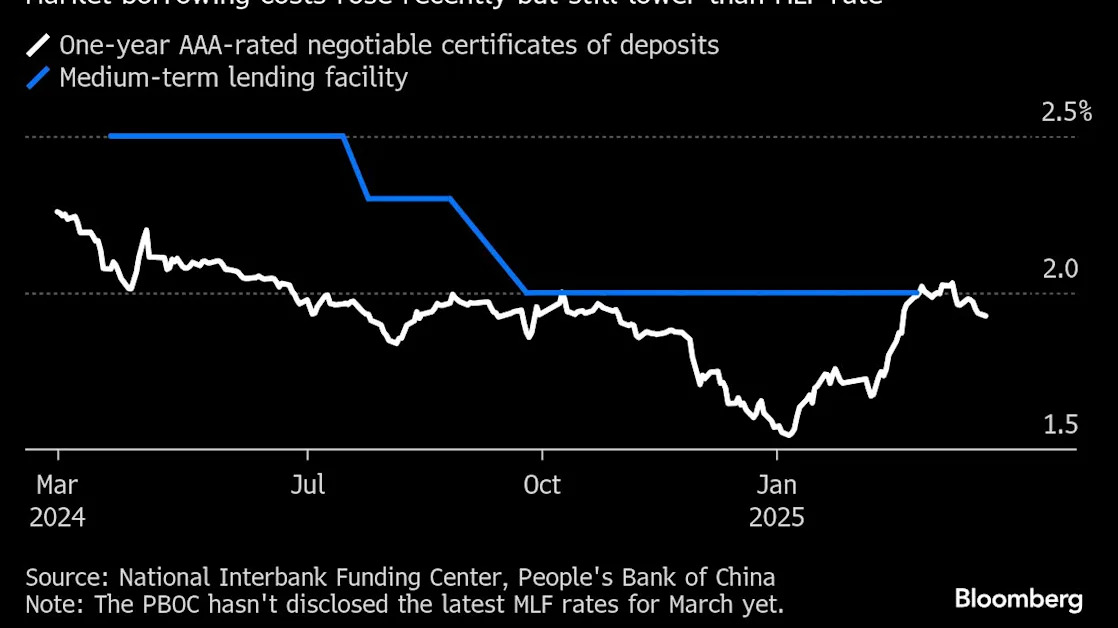
Bond Market Sees Hint of Easing in China Monetary Policy Tweak
(Bloomberg) -- China’s bond market is cheering a tweak by the central bank in the way it pumps cash into the financial system, on bets the surprise move may lead to lower funding costs and keep yields down.
Most Read from Bloomberg
Government bond futures rallied across the curve on Tuesday, with the 10-year contracts jumping to the highest in more than two weeks. The move came amid speculation that lenders will be able to borrow one-year loans from the People’s Bank of China at lower costs, thanks to a tweak in how policymakers will use a liquidity tool going forward.
Late on Monday, the PBOC said it will allow qualified banks to pay different interest rates — rather than at a fixed cost — for loans it lends out via the medium-term lending facility. This means banks can now borrow at rates closer to those prevailing in the market, which have largely been lower than the official MLF rate in recent years, according to analysts and a report by PBOC-backed outlet Financial News.
That’s good news for government bonds, as Chinese commercial banks — the biggest investors in the debt market — will find it more profitable to use borrowed liquidity to buy fixed-income products. While implicit, the move also signals a greater willingness to ease monetary policy and contrasts with the PBOC’s action in the last few months, when it defended the yuan by tightening liquidity and watching bonds slide.
“We see the potential minor rate cut as a signal of monetary stance turning from a hawkish bias year to date to accommodative as China’s policymakers brace for external volatilities,” Citigroup Inc. economists including Yu Xiangrong wrote in a note Tuesday. They pointed to more US tariffs as a key risk for growth.
China’s 10-year bond futures rallied as much as 0.3% before paring gains, while contracts on 30-year debt climbed 0.6%. In the cash market, the yield on notes due in a decade rose one basis point to 1.82%.
The market has been calling for an interest rate cut by the PBOC because the prevailing market funding cost has been lower than the MLF rate of 2% for a sustained period. The rate on one-year AAA-rated negotiable certificates of deposits, a measure of short-term borrowing costs between banks, stands at 1.9%.
What Bloomberg Economics Says...